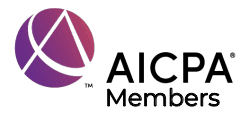Millions of people lost their jobs and filed for unemployment benefits each week for the past year. There are10 million Americans still unemployed, according to the latest Labor Department statistics. After a hard year during the pandemic, many people couldn’t wait to get their taxes done to close the chapter on 2020 and start fresh in 2021.
Where we are now?
Under the American Rescue Plan Act that President Biden signed March 11, 2021, Americans who received unemployment benefits last year can retroactively claim a tax exclusion of up to $10,200 of unemployment benefits received in 2020. In other words, the first $10,200 of unemployment benefits are exempt from federal income tax for households with an adjusted gross income under $150,000 (single or married). If you’re married, you and your spouse can each exclude up to $10,200 of unemployment compensation ($20,400 in total). Depending on your tax bracket, that could result in an additional refund of more than $1,000.
While this helps a lot of people struggling with the effects of the pandemic, it creates significant compliance burdens for tax practitioners, tax legislators and tax software companies. The tax exclusion up to $10,200 also creates a lot of unanswered questions.
How to incorporate the exclusion in the return?
Who can claim the exclusion?
How do you claim it?
What to do with the federal and state returns that are already filed?
How to treat the exclusion at the state level?
What if you got unemployment benefits from two states?
Where do we go next?
The IRS is working hard to provide guidance. On March 12, the IRS issued instructions for preparing returns that have excludable unemployment compensation. Then, on March 23, the IRS significantly changed those instructions. Meanwhile, the IRS still is deciding what to do about people who have already filed their 2020 tax returns.
If a return has already been processed, per the IRS, taxpayers should not file an amended return at this time and wait for the additional guidance. “We believe that we will be able to announce that individuals will not have to file the amended returns to take the exclusion for the $10,200 … and will be able to automatically issue refunds associated with the exclusion,” said IRS Commissioner Charles Rettig during a March 18 House Ways and Means Oversight Subcommittee hearing.
Major tax preparation software companies already updated their online software to incorporate the exclusion. But, unfortunately, the tax compliance of the taxpayer does not end at the federal level by filing Form 1040. Even though it’s becoming clearer what taxpayers should do on their federal returns to claim an exclusion, it’s still unclear what to do on their state tax returns.
Tax-free or tax burden at the state level?
Many states that tax unemployment benefits have not determined how they will handle the tax exclusion. State legislators are in a difficult position. Some states plan to conform to the federal provision and provide additional relief to their taxpayers. Other states may not conform since the exclusion relief would be a big hit to their tax revenue.
Fortunately, there are quite a few states that already don’t tax unemployment benefits, such as Alabama, Arkansas, California, New Jersey and Pennsylvania, so individuals in these states don’t need to worry about the treatment.
Some states, such as Connecticut, Illinois, Louisiana, Maine and New Mexico, have already provided the provisions to conform to the federal treatment and exclude the $10,200 from taxable income. States that won’t conform to the federal treatment potentially have to revise the forms and instructions to inform their taxpayers how to incorporate the exclusion in their state income tax returns. Certain states, such as Colorado, Georgia. Rhode Island and Wisconsin, have already provided a provision to add back the exclusion amount to tax it at the state level.
The tax deadline is approaching fast, and states must decide about the exclusion as soon as possible to assist the taxpayers as they process and finalize their tax returns. The AICPA is monitoring the issue for its members and state societies. To get the latest updates, check out the AICPA recommendations for 2021 administrative, filing and payment relief for state and local taxes during the coronavirus pandemic. To quickly access general state tax filing information, the AICPA Tax Section provides the 2020 State Tax Guide for Individuals and 2020 State Tax Guides for Businesses to its members.
Irina Petrashkevich, CPA, Senior Manager — AICPA, Tax Policy & Advocacy





